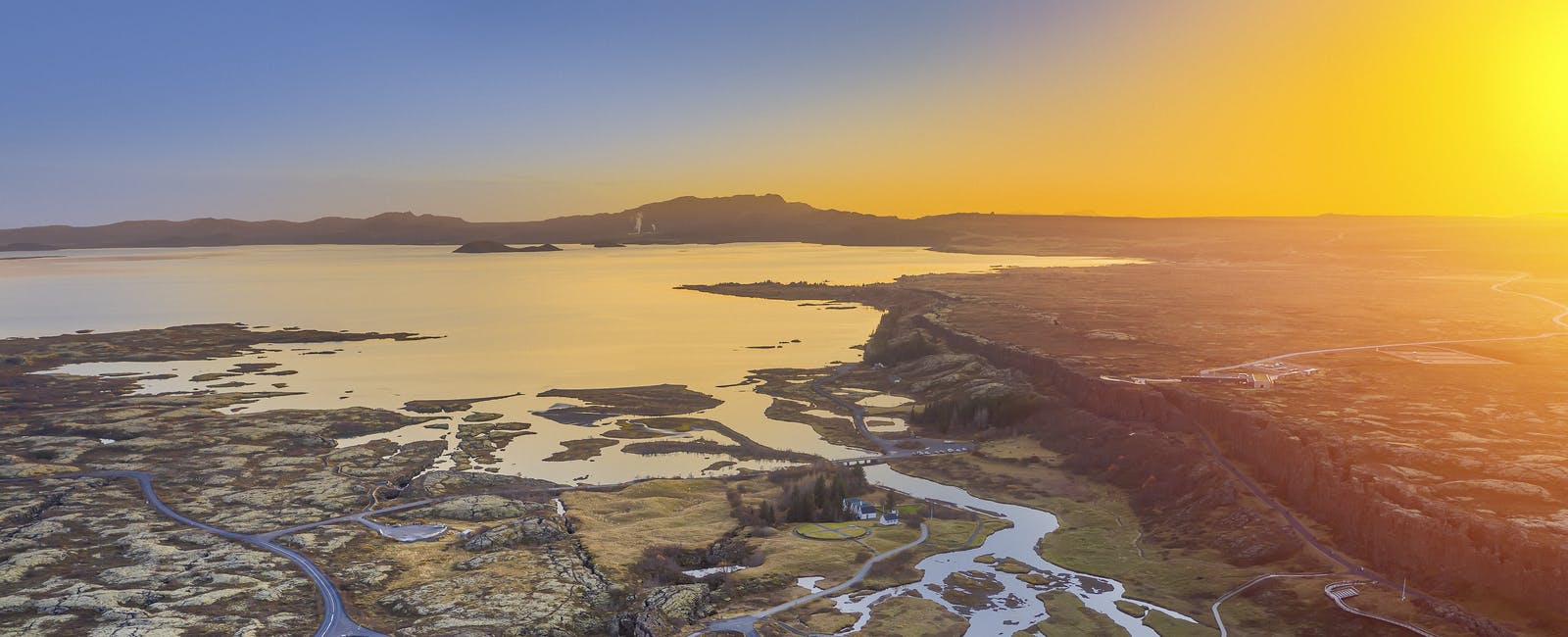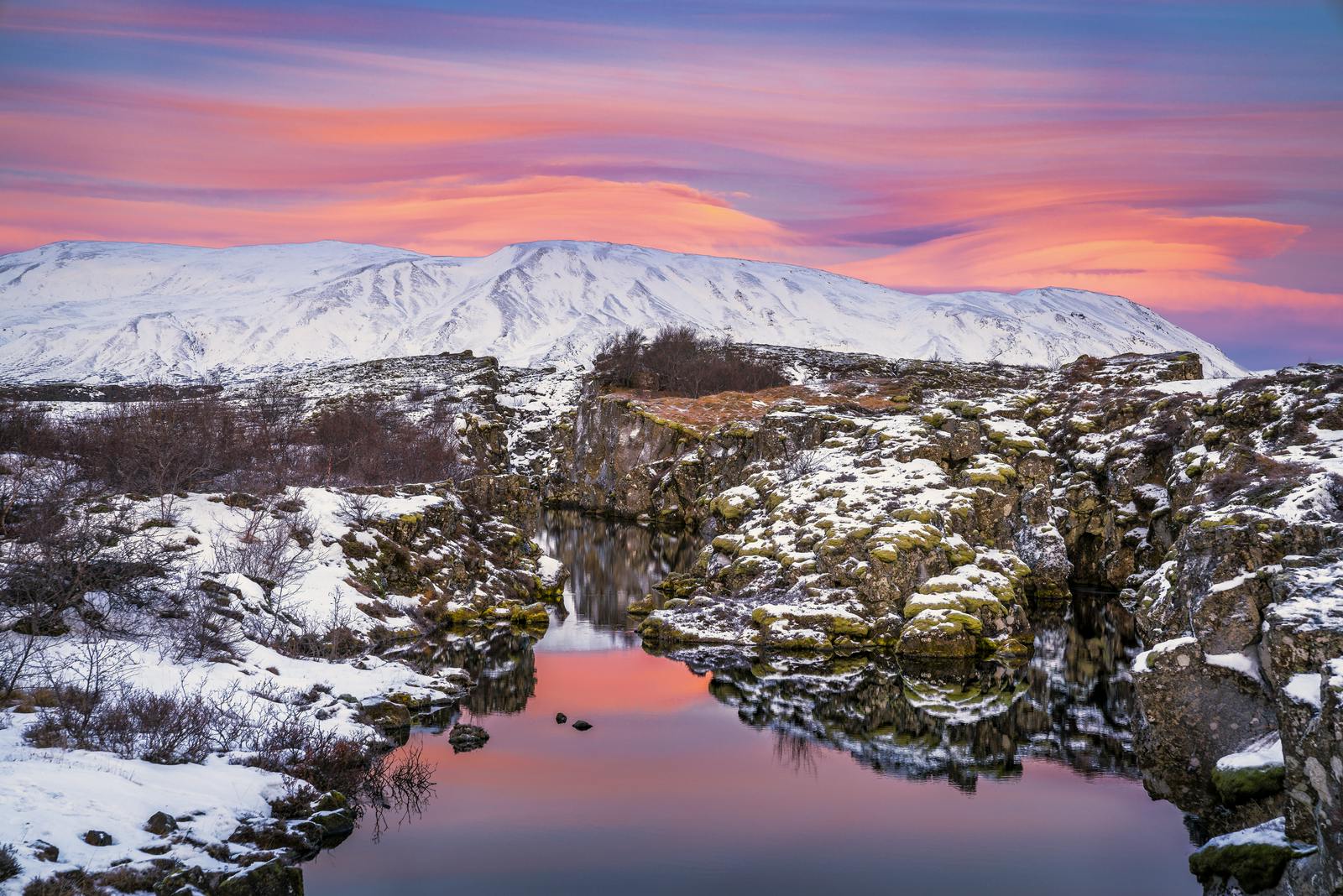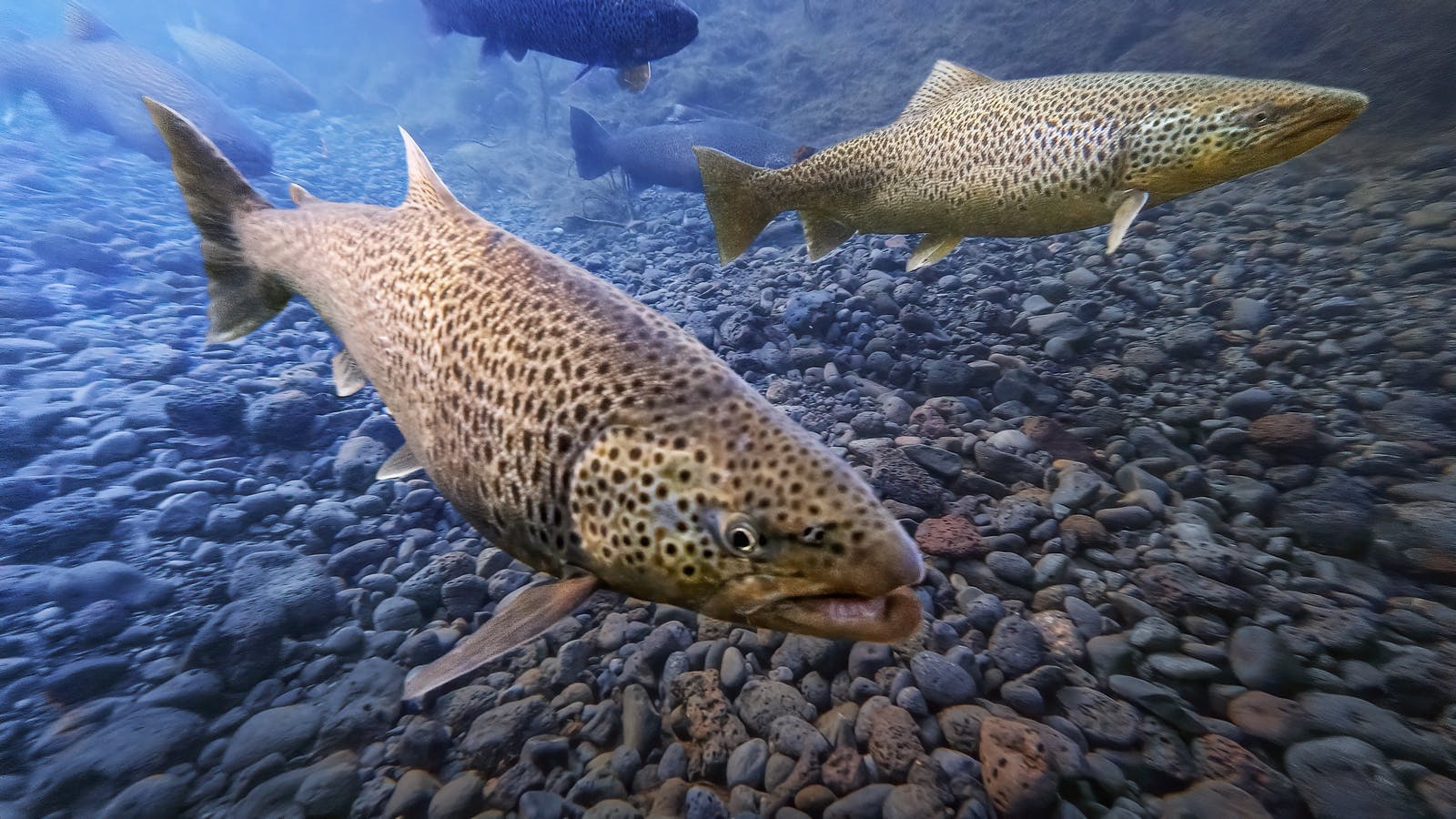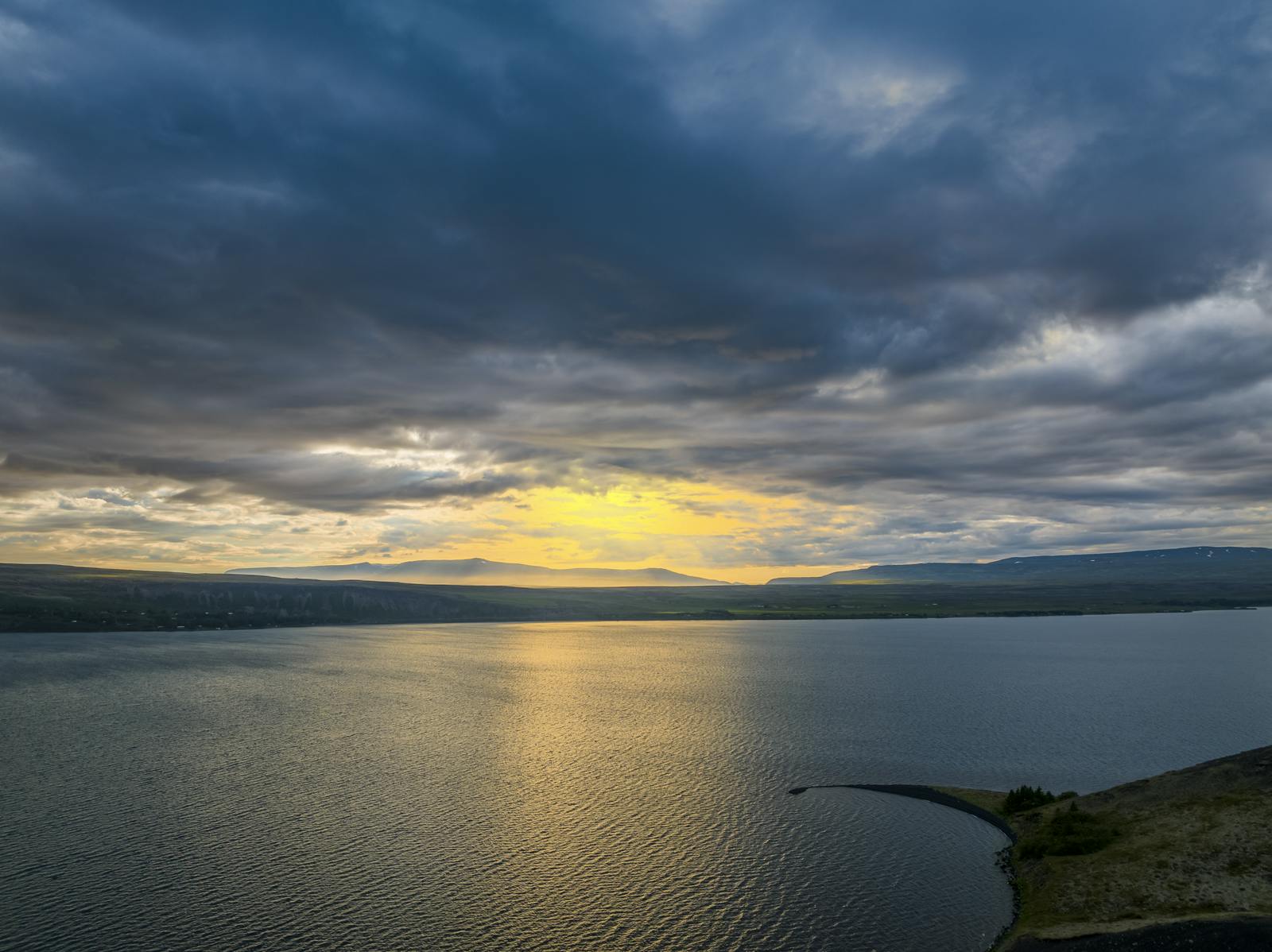
Guide to Þingvallavatn
Lake Þingvallavatn (Thingvallavatn)
Located in the Þingvellir National Park, Þingvallavatn is Iceland's largest natural lake and a gem of Icelandic nature. The lake's crystal-clear waters stretch across an area of 83 square kilometres, reflecting the dramatic volcanic cliffs and lava formations that surround it.
Besides its striking beauty, Þingvallavatn holds historical significance. The location of the ancient Icelandic parliament, the Alþingi was in close neighborhood. Visitors can explore the park's walking trails, witness the awe-inspiring Silfra Fissure, or engage in snorkelling, diving, and fishing. Þingvallavatn showcases the harmonious blend of nature, history, and geology that makes Iceland genuinely remarkable.
The 'Water in Icelandic Nature' exhibition in Perlan will give you a deeper look into the country's wonders. Water is a big part of Icelandic nature, and in Perlan, you can experience the wonderful landscape and gain deeper insights into its importance.
How To Pronounce Þingvallavatn?
Þingvallavatn is pronounced as "thing-vatl-a-vatn" in Icelandic, with an emphasis on the first syllable.
Location, Þingvellir National Park
Þingvallavatn is located approximately 40 kilometres (25 miles) east of Reykjavík, Iceland's capital city. The lake is part of the Þingvellir (Thingvellir) National Park, which is a UNESCO World Heritage site. The lake is situated in a rift valley formed by the separation of the Eurasian and North American tectonic plates.
Historical Significance

Þingvallavatn has historical importance in Iceland as the lake surrounds the site of the ancient Icelandic parliament, known as Alþingi. The place name refers to this and means the Lake of the Parliaments Plains. Established in 930 AD, Alþingi is one of the oldest parliamentary institutions in the world. It was the central gathering place for the country's leaders to discuss laws, settle disputes, and make important decisions.
What to do at Þingvallavatn?

There are several activities you can enjoy when visiting Þingvallavatn. Start by exploring the Þingvellir National Park itself, which encompasses Þingvallavatn. You will find marked trails that will take you through breathtaking landscapes.
If you enjoy fishing, Þingvallavatn is an excellent spot to cast your line. The lake is known for its trout and Arctic char populations, providing excellent fishing opportunities. Fishing licenses are required and can be obtained online or from authorized vendors.
Silfra, located in Þingvallavatn, is a world-famous diving and snorkelling site. It offers crystal-clear water visibility due to glacial meltwater filtered through lava fields. Diving or snorkelling in Silfra allows you to explore the underwater world and the unique geological formations between the tectonic plates. It is important to note that diving in Silfra requires certification, and guided tours are available for both diving and snorkelling.
How To Get To Þingvallavatn from Reykjavík?
The most convenient way to reach Þingvallavatn is by renting a car and driving from Reykjavík. The lake is approximately 40 kilometres (25 miles) east of the city, and the journey takes around 45 minutes. You can follow Route 1 (also known as the Ring Road) eastward out of Reykjavik and then take Route 36 towards Þingvellir National Park. The roads are well-maintained, and there are signposts to guide you along the way.
FAQ

What Is The Biggest Lake In Iceland?
The biggest lake in Iceland is called Þórisvatn. It is located in the Highlands of Iceland, specifically in the southern part of the country.
How Far Is Þingvallavatn From Reykjavík?
The lake is located approximately 40 kilometres (25 miles) east of the city, and the journey takes around 45 minutes by car.
Can I Swim In Þingvallavatn?
Yes, swimming in Þingvallavatn is possible, but it's important to note that the water in the lake can be quite cold, even during the summer months. The average water temperature of Þingvallavatn ranges from around 2 to 4 degrees Celsius (36 to 39 degrees Fahrenheit). Therefore, swimming in Þingvallavatn requires careful consideration and preparation.







